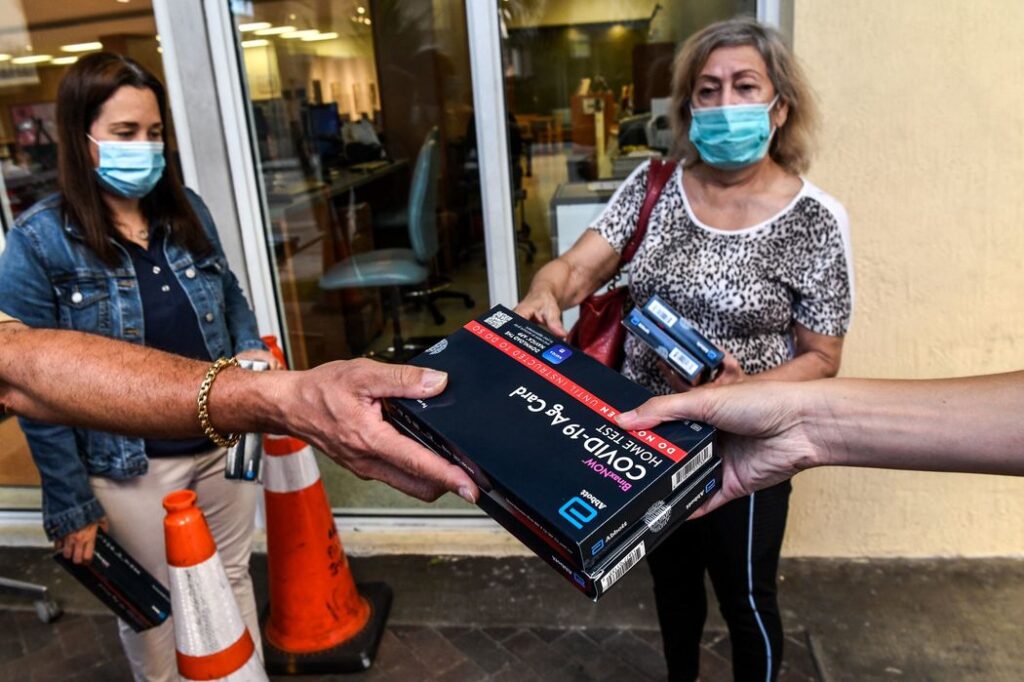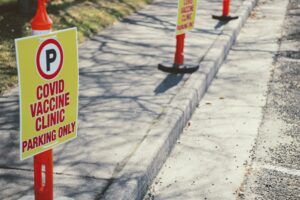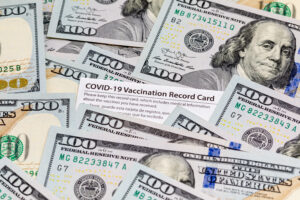Editor’s note: This op-ed was first published by MarketWatch on January 20, 2022.
Two years into the COVID-19 pandemic, experts who counted on prevention tactics such as shutdowns and vaccine mandates have been humbled by the blistering spread of the omicron variant. Even a group of health advisers to the Biden transition now concede that COVID-19 is here to stay.
To keep people safe and restore high function to society under this “new normal,” we need a decisive pivot. Rather than revising public health restrictions and spending billions on mass testing, we should be doubling down on treatments for high-risk populations, a strategy that not only would be more targeted but also likely more cost-effective.
Let’s take a brief moment to give containment efforts their due. Containment made sense early in the pandemic when we were facing a new disease with limited community spread and when vaccines and treatments were not available.
But the long-term verdict is now in. Every country, no matter what the policy response, has experienced tremendous surges in infections and deaths – over 5.5 million people have died — as the more transmissible delta and omicron variants have emerged. Perhaps the only exception is China (if its data can be trusted) with its draconian lockdowns.
Sign up for Schaeffer Center news
Failed efforts to contain COVID have come at huge economic, social and health costs. Businesses have been shuttered and livelihoods lost. Millions of children have been denied in-person schooling. Mandates have impinged on personal liberty and exacerbated social divisions. We have forgone social interactions or resigned ourselves to interacting with masks. Healthcare has been delayed, and rates of anxiety and depression are at crisis levels.
The best way to minimize the harm from these infections is to meet and beat COVID where it actually exists in individuals, not where it may or may not be headed in a population. There are several reasons why this makes sense:
- The FDA has given emergency approval to Pfizer’s PFE, 0.93% Paxlovid pill, which can reduce hospitalization and death rates by 90% if it is taken within a few days of symptom onset. The Biden administration has ordered 20 million doses. The FDA also has given blessings to Merck MRK, -0.69% and Gilead GILD, -1.78% for their antiviral therapies, and more treatments are in the pipeline. While these treatments cost more than a booster shot—about $500 per patient — the booster needs to be given to everyone while treatment is only given to those who get COVID and have symptomatic disease, so the total cost should be less as long as treatment is given to those at highest risk of hospitalization or death. An added bonus: the new treatments dramatically reduce viral loads, which could also help stop transmission of the virus.
- Millions of people have been vaccinated and millions more have already had COVID-19. Their immune systems are primed to fight future infections. Thus the overall benefits of prevention today are much smaller than in the past.
- The virus likely will evolve to be more transmissible and less deadly. This means prevention efforts will be less effective at controlling surges, but the consequences of infections will be less severe.
- With an endemic disease, population-wide prevention efforts, unless implemented forever, have limited efficacy as they most likely delay rather than prevent cases. In addition, public efforts at controlling spread are coercive and use a one-size-fits-all approach. There is every reason to believe that private citizens will continue their own efforts to avoid infection, tailored to their individual circumstances and preferences.
- Mandating booster shots for everyone is a new rallying cry in the public heath arena, but the policy is not well aimed. For many young and healthy individuals, COVID is not a large risk. Boosters should be targeted to the elderly or the young with comorbid conditions such as diabetes, chronic lung disease or an immunosuppressive disease. With waning immunity from boosters, multiple shots might be required. It is unlikely that many will voluntarily choose to get these shots. So far only 39% of vaccinated individuals have received a booster, much lower than the typical flu shot rate of around 50%. Moreover, mandates or other government pressures will further erode confidence in public health.
Effective treatment, now that it is becoming available, is a much better strategy because it is administered only to those who need it.
Public resistance to FDA-approved treatment is likely to be much lower than the resistance to vaccines. These treatments would not include ivermectin, a treatment for parasites and head lice in humans as well as a horse dewormer, and can have serious side effects including death, as the FDA has repeatedly warned.
The old bromide says that an ounce of prevention is worth a pound of cure. COVID is turning that on its head. Full prevention is not possible, even with vaccines. Treatment is the best option.
Billions of dollars now committed to home-testing masses of people could be saved if we tested only the symptomatic. Those funds would be better spent supporting access to affordable COVID treatment for people with a high risk of hospitalization. This test-and-treat policy will get us out of the pandemic mess with minimal collateral damage.
Related Work
-
Press Release
Traditional Vaccination Playbook Doesn’t Work with COVID



